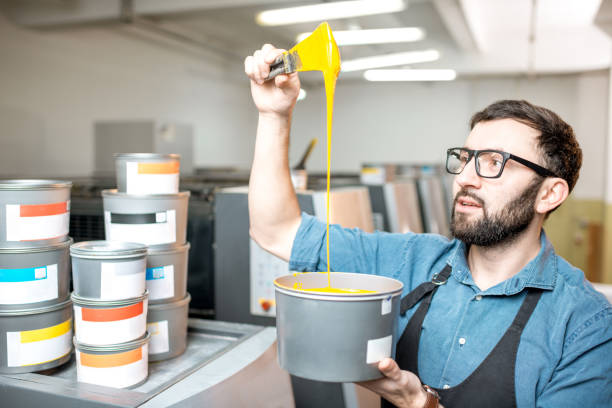How to Store and Dispose of Paint
Properly storing and disposing of paint is crucial to maintaining safety and protecting the environment. Additionally, it helps in extending the life of the paint for future use and ensures that hazardous waste is handled responsibly. This article will guide you through the best practices for storing and disposing of paint effectively.
Proper Paint Storage
Storing paint properly can extend its shelf life and save you money by reducing waste. Start by ensuring the paint can’s lid is sealed tightly to avoid air exposure. An airtight seal prevents the paint from drying out and keeps it fresh for future use. Store the paint in a cool, dry place away from direct sunlight and extreme temperatures, which can degrade the paint’s quality.
Moreover, make it a point to label each paint can with pertinent information such as the color, brand, and the date of purchase. This helps you quickly identify the contents and their corresponding projects. It’s also beneficial to store the paint cans upside down to create an even tighter seal by allowing the paint to act as a barrier against air.
Steps to Store Paint Properly
- Ensure the lid is sealed tightly.
- Label each can with important information.
- Store in a cool, dry place away from extremes in temperature.
- Consider storing cans upside down for an airtight seal.
- Keep out of reach of children and pets.
Disposing of Paint Responsibly
Paint disposal requires careful handling to avoid environmental contamination. For small amounts of leftover paint, it’s often acceptable to let the paint dry out completely before disposing of it. You can leave the lid off the can to let it air dry or use absorbent materials like cat litter or sawdust to hasten the drying process.
If you have significant quantities of paint to dispose of, it’s advisable to contact your local waste management facility for specific guidelines. Many communities offer hazardous waste collection days or paint recycling programs. These programs ensure that paint is either safely disposed of or repurposed for other uses.
Recycling and Donating Paint
Before you dispose of paint, consider if it can be recycled or donated. Numerous organizations and community centers accept paint donations, especially if it’s still in good condition. These donations can support local schools, theaters, and non-profits that rely on community contributions.
Recycling programs are another excellent option. Many cities have facilities or designated days for recycling paint. These programs often turn old paint into new, usable paint or repurpose it for industrial uses. Check with local services to see what options are available in your area.

Using Up Leftover Paint
One of the best ways to handle leftover paint is to find ways to use it up. Small amounts of paint can be used for touch-ups around your home, small craft projects, or even as primer for future painting jobs. Mixing leftover paints to create new custom colors for smaller projects is another creative and effective use.
Moreover, sharing with friends, family, or neighbors who may need small amounts of paint can prevent it from going to waste. By using up what you have, you contribute to reducing environmental waste and make the most out of your purchase.
Safety Precautions When Handling Paint
When storing, using, or disposing of paint, always follow safety precautions. Ensure proper ventilation when working with paint to avoid inhaling fumes. Use gloves and protective clothing to prevent skin contact and always read the manufacturer’s instructions for additional safety measures.
It’s also vital to store paint out of reach of children and pets. Accidental ingestion or exposure can be dangerous, so keeping paint in a locked cabinet or high shelf is highly recommended. Lastly, never pour paint down the drain as it can contaminate the water supply and harm wildlife.
Conclusion
Proper storage and disposal of paint not only extend its usability but also safeguard the environment. By following these guidelines, you can store paint efficiently and dispose of it responsibly, thus minimizing waste and promoting safety. Whether through recycling, donating, or using up remaining paint, you are contributing to a sustainable and safer world.
FAQ
1. How long can paint be stored before it goes bad?
When stored properly in a cool, dry place with an airtight seal, paint can last for several years. Latex paint can last up to 10 years, while oil-based paint can last up to 15 years.
2. Can I dispose of paint in the regular trash?
Disposing of liquid paint in the regular trash is usually not allowed. You need to let it dry out completely or take it to a hazardous waste disposal facility.
3. What should I do if I spill paint?
Act quickly to minimize damage. Absorb the spill with materials like cat litter or sawdust and clean the area immediately. Follow up with soapy water for smaller spills.
4. How can I tell if paint has gone bad?
Paint that smells rancid, has a lumpy texture, or shows signs of separation where it cannot be stirred back together has likely gone bad and should be disposed of.
5. Can I mix leftover paints together?
Yes, you can mix leftover paints together as long as they are the same type (latex with latex or oil-based with oil-based). This can create new custom colors and reduce waste.
